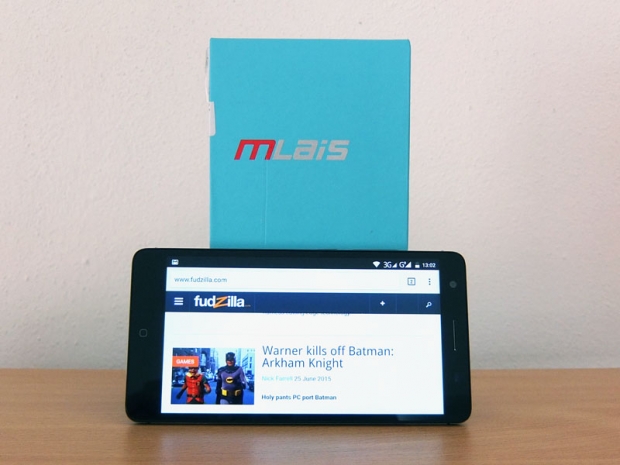
URL: http://www.gearbest.com/cell-phones/pp_181436.html
Price:$173.99
Coupon:M7GB
The Mlais M7 is another value phablet based on a very familiar recipe – 5.5-inch screen, MediaTek octa-core, 13-megapixel camera and a killer price tag.
In case you kept track of smartphone trends in Asia this year, the spec should not surprise you. The phone is based on a MTK6752 processor with eight 64-bit Cortex-A53 CPU cores and Mali T760 graphics. The 5.5-inch panel is a 720p unit, so the SoC does not have to work too hard to keep everything smooth. The addition of 3GB of RAM should help as well, not to mention LTE connectivity. A fingerprint sensor is on board as well, right next to the Sony 13-megapixel camera.

Mlais is a very young Hong Kong smartphone outfit. The export brand launched on Christmas, but it already has a number of competitively priced smartphones. As part of our ongoing coverage of commoditised Android, we had a chance to test the Mlais M4 Note and Mlais M52. While these two models were “inspired by” the Xiaomi Redmi Note and Samsung Galaxy Note 4, the new Mlais M7 tries to be original – it’s not a clone and it takes its design cues from a range of different products.
The end result is a sleek phone with a good tactile feeling. Despite the low price, the Mlais M7 feels robust and the choice of materials doesn’t leave room for complaints. You get a stainless steel frame and matte, rubberized plastic on the back.
Let’s take a closer look.
Design and Build Quality
Right off the bat, the M7 has a bit more to live up to than its predecessors. Since it’s not inspired by a big-brand device, a lot more work had to go into the design. It’s also the startup’s priciest handset, so it sort of needs to look better than the rest of the line-up, which isn’t easy when your line-up includes Samsung and Xiaomi clones.
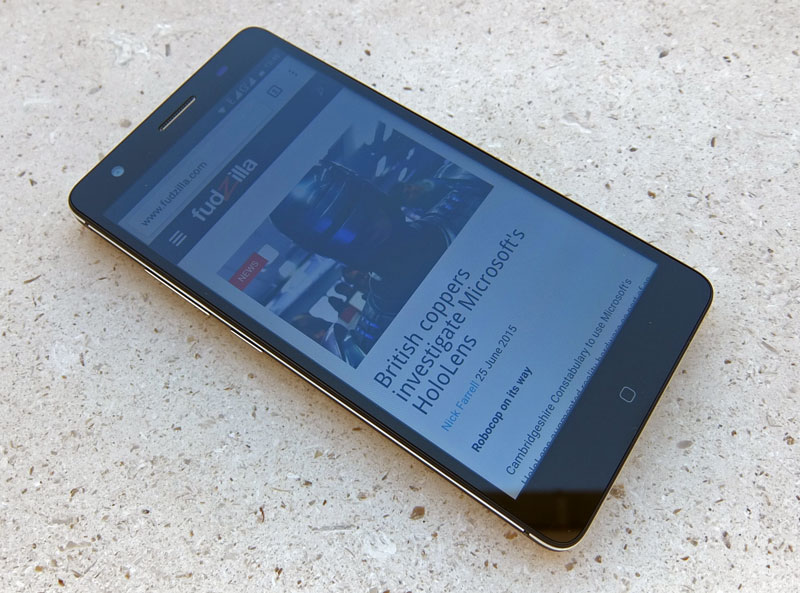
So, is the design any good? Well, there is nothing bad about it. It’s by no means spectacular, but it’s not merely utilitarian, either. The Mlais M7 is available in black and white, and both versions have a few things going for them. The frame is CNC-milled stainless steel, but on the black version it has a matte black coating, save for the edges. The buttons are metal, too, and they feel very good.

The frame is topped off by a pane of Gorilla Glass 3, framed by a small piece of plastic trim. The bezels aren’t small, but we’ve seen worse on similarly priced devices (and some pricier devices like the Asus Zenfone 2). The trade-off is that there is no curved glass, but in case you’d rather have Gorilla Glass 3 than a piece of good looking, but less durable 2.5D glass, it’s not a bad deal.
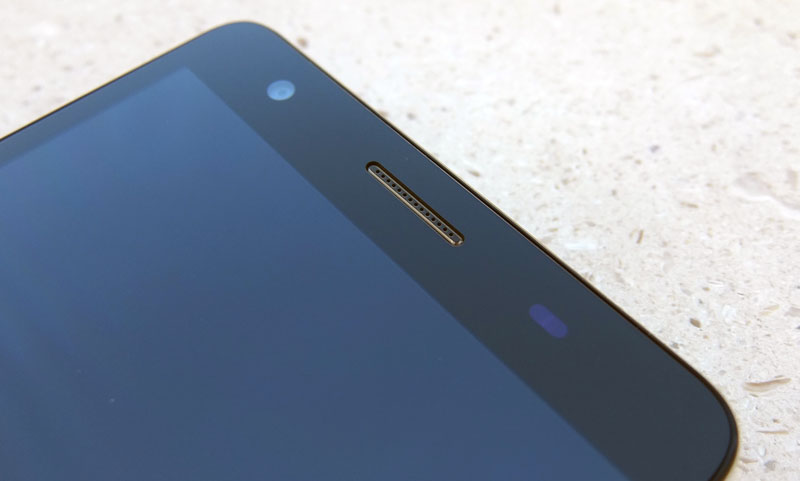
The bottom houses three capacitive buttons, but only the home button is visible without backlight. The front-facing 5-megapixel camera, earpiece and sensors are (obviously) at the top.
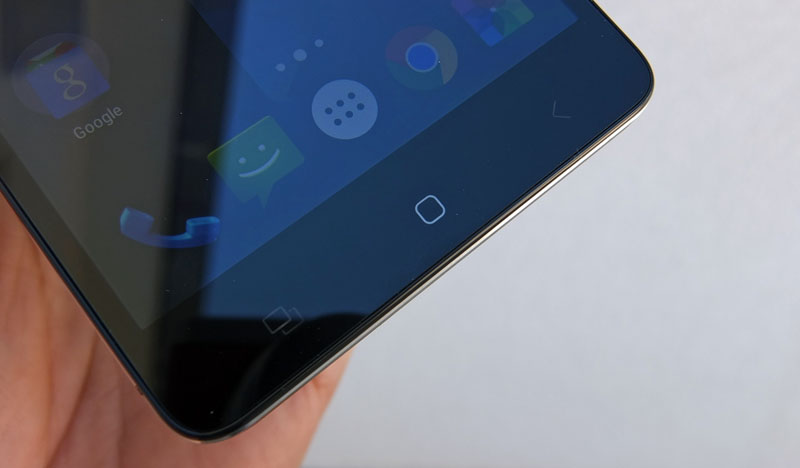
The back cover is removable, but this does not mean it feels flimsy. Au contraire, it’s a thick slab of rubberized, matte plastic that stands up to a lot of punishment and brushes off fingerprints with ease. There’s a single rear speaker, at the bottom, while the LED flash, rear camera and fingerprint sensor are at the top.
The latter is an interesting addition. Although Google is pushing fingerprint scanning (and biometrics in general), very few Android devices ship with fingerprint scanners. Most people associate smartphone fingerprint scanners with Apple’s home button Touch ID scanners, but an increasing number of smartphone makers are choosing to place the scanner at the back.
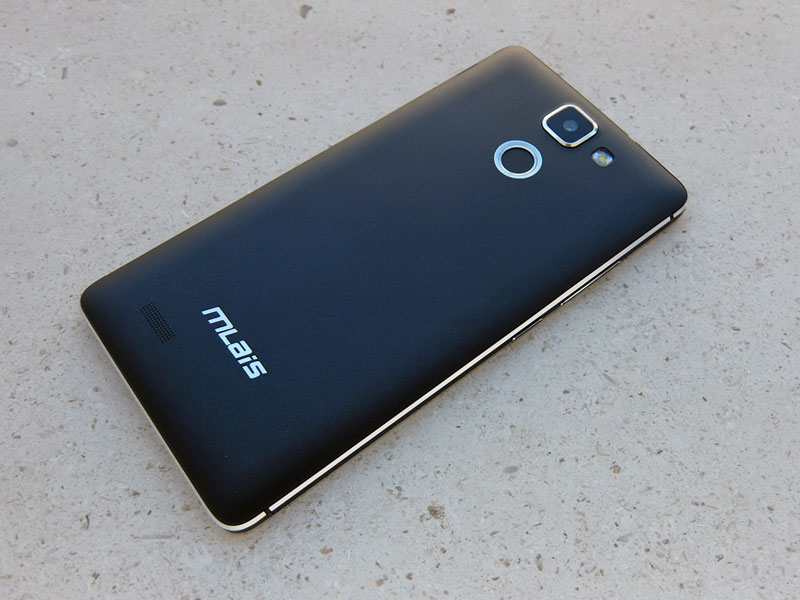
There is a very good reason for this – placing a fingerprint sensor next to the camera saves room, quite a bit of room. For example, the iPhone 6 Plus is 158mm tall, in part due to its physical home button/fingerprint scanner, but the Mlais M7 is 149mm tall, and this makes a big difference. In fact, there are only a handful 5.5-inch phones shorter than 150mm, and most of them are LG flagships.

So, while the design isn’t very eye-catching, the humble Mlais M7 is in fact one of the more compact 5.5-inch phablets on the market. It’s just 5-7mm taller than a standard 5-incher, although it’s still as wide as most 5.5-inch phones. It’s 8.6mm thick, but it hides its girth quite well, thanks to the thin metal frame and gently sloping rear cover.

Overall, we think Mlais did a nice job, especially for a mainstream phone that does not aspire to be a flagship killer. Speaking of which, let’s take a closer look at the spec.
Mlais M7 Specs and Performance
This is where it gets a bit more interesting. Value phablets usually come with quite good specs, but many are ruined by lacklustre build quality or poor software. Luckily, that’s not the case with the Mlais M7, since build quality is a non-issue and the software is, well, pretty much stock Android 5.0.
There are a few compromises, here is a closer look at the Mlais M7 spec:
- SoC: MediaTek MT6752, 28nm HPM
- CPU: Eight 64-bit Cortex-A53 cores clocked at up to 1.7GHz
- GPU: ARM Mali-T760 MP2 at up to 700MHz
- RAM: 3GB
- Storage: 16GB internal storage (partitioned), microSD slot up to 64GB
- Display: 5.5-inch 720p IPS panel, Gorilla Glass 3
- OS: Android 5.0
- Rear camera: Sony IMX135 13-megapixel sensor
- Front facing camera: 5-megapixel sensor
- Battery: 2600mAh lithium polymer, user-replaceable
- Dimensions: 149.5 x 76.8 x 8.6 mm (5.88 x 3.02 x 0.34 inches)
- Weight: 160g
- WiFi and Bluetooth: 802.11b/g/n WiFi and Bluetooth 4.0
- Sensors: ambient light, direction, accelerometer, compass, proximity, pressure, GPS, A-GPS, fingerprint scanner
- SIM card: dual SIM (micro and standard SIM), dual standby
- Network support:
- 2G GSM: 850/900/1800/1900MHz
- 3G WCDMA: 850/900/1900/2100MHz
- 4G FDD-LTE: B1/3/7/20 800/1800/2100/2600MHz
So what’s missing? Not a lot – since this is not designed to be a high-end device, most of the omissions are understandable. Pixel junkies could complain about the 720p display, but the good news is that display quality is very good.
One thing missing from the spec sheet is NFC support. While it’s still not a deal-breaker for most consumers, it would have been a nice addition (and shouldn’t add too much to the price anyway).
Camera geeks could also point out that the Sony IMX135 sensor has been around for a while, and that the IMX214 would have been a better choice. There is a problem though – Sony is having a hard time keeping up with demand for the IMX214, so the IMX135 is still widely used. In terms of specs, the IMX135 is not that far behind the IMX214 - you still get the same megapixel count and same pixel size. However, the IMX214 supports a couple of advanced features, like HDR video.
Camera geeks could also point out that the Sony IMX135 sensor has been around for a while, and that the IMX214 would have been a better choice. There is a problem though – Sony is having a hard time keeping up with demand for the IMX214, so the IMX135 is still widely used. In terms of specs, the IMX135 is not that far behind the IMX214 - you still get the same megapixel count and same pixel size. However, the IMX214 supports a couple of advanced features, like HDR video.
Nit-pickers will always find something to complain about, but they won’t find much more to whine about. You still get a very fast processor, 3GB of RAM, a fairly complete package in terms of sensors and just about everything else. The decision to use 3GB of memory on a 720p device might sound like a case of marketing trumping engineering, but the subjective feeling is that it makes a difference in some situations. Android has good memory management – we’ve used Android 5.0 on devices with 1GB, 2GB, 3GB and 4GB of memory, and the system always manages to make the most of it (well, just barely on 1GB). In layman’s terms, more stuff is dumped into the RAM, which means the system can access it a lot faster than from internal storage. It improves responsiveness, especially when you have loads of apps running in the background. Flicking through apps on the Mlais M7 is a breeze, even when you’re running loads of demanding apps.
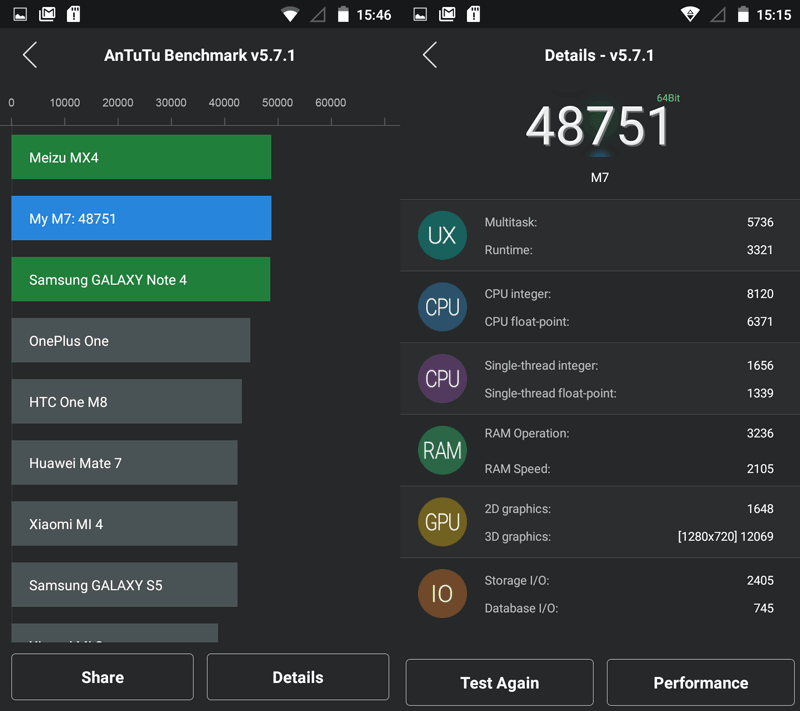
In AnTuTu, the Mlais M7 scored an admirable 48751. Not bad for a sub-$200 phone.

In 3Dmark Ice Storm we got an unimpressive result. However, we should note that the Mlais M52, with the same processor and less RAM, scored more than 10,000, running Android 4.4. We can only assume that we are looking at a software issue - with this sort of hardware, the M7 could have (and should have) scored a bit more.

In Basemark OS II the Mlais M7 scored 1007. It's not a record-breaking result, but it's relatively close to Samsung's 2014 flagship and the Asus Zenfone 2.

All in all, performance is not an issue.
Audio, Display and Camera Quality
The Mlais M7 packs a laminated 5.5-inch IPS display in 1280x720. This translates to 267ppi, which doesn’t sound like much by today’s standards, but it’s not bad, either.

The good news is that the display looks very good. The colours are vibrant, albeit with a cool tint. The Gorilla Glass 3 on top is not too reflective. Our review sample shipped with a pre-installed screen protector which adds a bit of glare. It’s not much of a difference, but since the phone already packs Gorilla Glass 3, it’s overkill and can be peeled off. In case you are really, really paranoid about the screen, you can get a toughened, tempered glass screen protector, with an oleophobic coating.
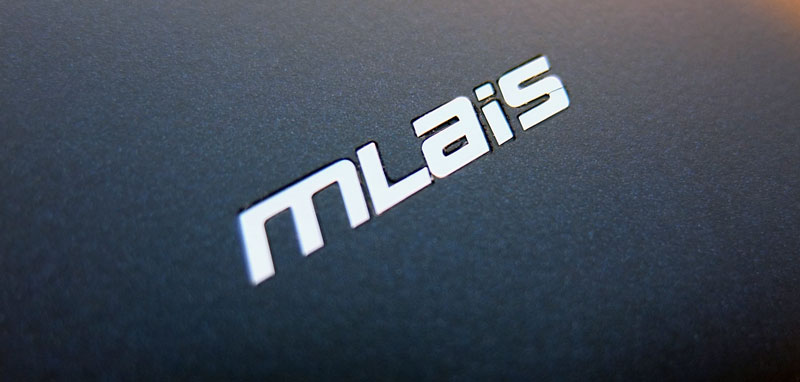
The rear speaker is not very powerful, but it’s not bad. It’s average and that’s about it. It is easily muffled when you place the phone on a flat surface, but thanks to its position, you won’t cover it when gaming or watching video in landscape mode.
As far as phone functionality goes, we don’t have any major complaints. Well, maybe just one – the Mlais M7 does not appear to have a noise-cancelling microphone. This doesn’t make much of a difference in most situations, but for people who frequently use their phone in very crowded places, it would have been a nice addition. We tried it out with two SIM cards and everything worked fine.
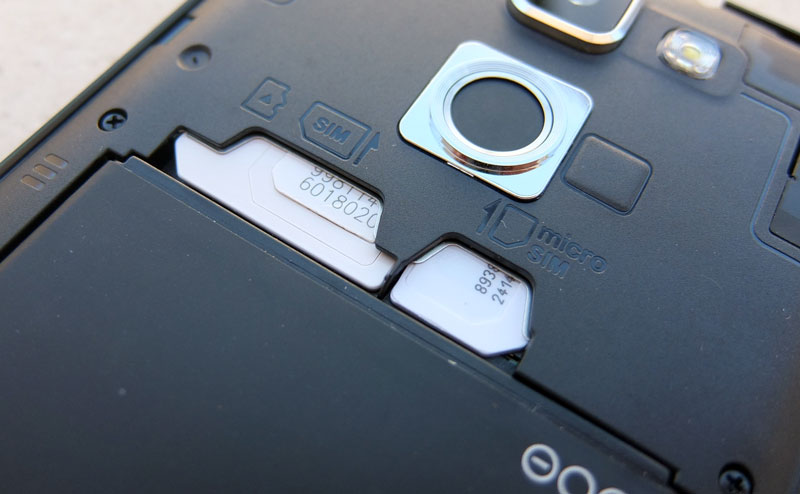
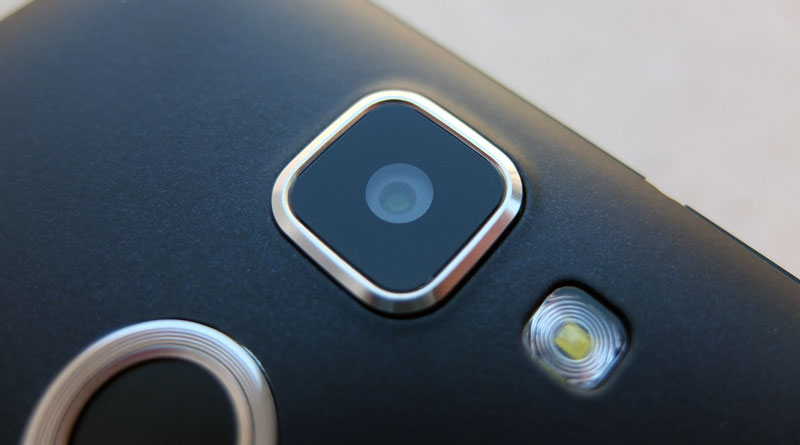
It has the same resolution and same sensor/pixel size. It lacks some advanced features, but it should suffice for casual photography. In daylight, the camera does a very good job, with very low noise levels and good colour reproduction.
We didn’t test the camera in our usual office setting – the weather was good and the Croatian coast offers much more attractive scenery.

HDR can also help in some situations, as you can see on our beach shots.

but it can also be sluggish despite the fast processor. This means you can end up with some HDR ghosting. For example, this is what we got on a windy day - the colours are spot on, dynamic range is good, but as you can see, fluttering leaves and flowers cause a fair amount of ghosting.

It may have something to do with Antonio's white wine as well.

It gets a bit trickier in low light. We are not sure about the aperture, but the M7’s camera does not react well to a lack of light, so we can only assume that the lens is not very fast. Night images end up with a fair amount of grain. Still, we managed to get some nice dusk photos.

Video quality is relatively good, although the 1080p fine mode doesn’t really make much of a difference – you’ll get a lot of detail with 720p and the extra resolution doesn’t improve quality very much (yet it consumes a lot more storage).
While a newer sensor with a faster aperture would have been a great choice, we need to keep in mind that we are still dealing with a (very) inexpensive device. Considering the price, it’s really hard to complain.
OS, UI and Everyday Use
This isn’t a very exciting aspect of the Mlais M7, because it ships with near-stock Android 5.0. The launcher is very similar to the Google Now launcher, although some transitions and animations were ditched. With the most powerful mid-range processor on the market, 3GB of RAM and an undemanding 720p display, we are looking at one snappy device.
The hardware has no trouble dealing with anything you throw at it, and it would probably be lighting fast even with a 1080p display. Our only complaint is the stock lock screen, which has a limited choice of backgrounds and does not allow for custom ones.
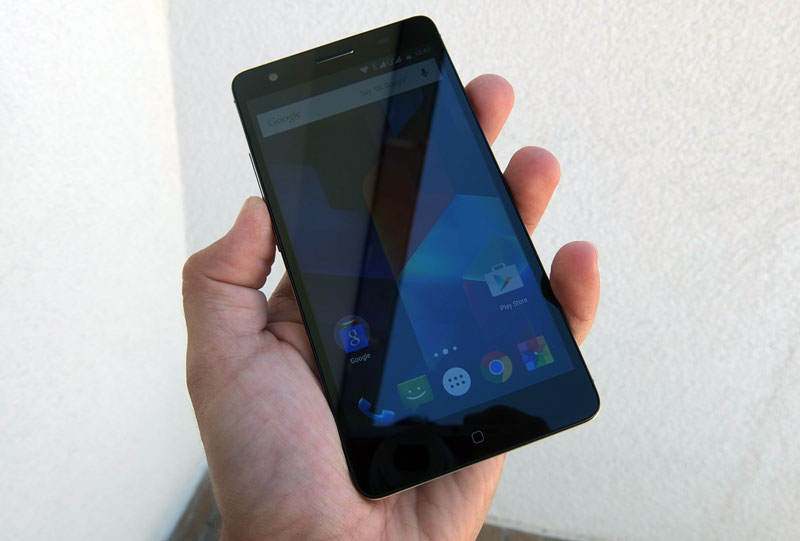
While the OS is mostly stock, there are a few custom features. We are not talking about bloatware, you’ll get no useless apps on the Mlais M7 – the device ships with a single pane of preinstalled apps and that’s it. The customization revolves around gestures and the integrated fingerprint scanner.
The phone sports double-tap to wake, along with four standard gestures (swipe up to unlock, launch camera with “C” on lock screen, launch music player and calculator. You can also set up 7 custom gestures, depending on your needs and preferences. Most of the gestures work well, although some can be sluggish. For example, double-tap is nearly instantaneous, while swipe up to unlock takes more than a second. On a couple of occasions, the “C” gesture activated the phone in the pocket, which means gestures could do with a few more tweaks.

What about using the fingerprint scanner to unlock the device? Well, there is some good news and bad news. To start the process you will need to access the lock screen, which is easy thanks to the reliable and fast double tap feature. Once you’ve double-tapped the screen with your thumb, or index finger, the fingerprint scanner will come online. In case you had your finger on the sensor when you tapped the phone, it will unlock in a heartbeat.
Obviously, since the scanner is on the back, you will need to use your index fingers on it. The sensor area is relatively small, but the sensor itself works well. To be frank, when it comes to value phones with fingerprint scanners, we are still sceptics, but Mlais appears to have done an decent job; the scanner is relatively reliable and, coupled with double tap, it is rather fast. Of course, dispensing with the need to access the lock screen entirely would be ideal. There is also a minor software issue to report – an option in the Settings menu allows you to “Use fingerprint recognition as an alternative to…” or something rather – we have no idea since the option won’t open.
Like we said, from a hardware perspective the decision to place the scanner on the back makes sense on oversized devices. It helps keep the height down, and at 149mm tall, the Mlais M7 is just marginally taller than some 5-inch phones. While it is still relatively wide, it is one of the most compact 5.5-inch phones on the market, and it’s the smallest in its price category. The biggest drawback of placing a small fingerprint sensor on the back is the fact that you will press it from loads of different angles, and the tiny area that’s being scanned might not be the right one. With a thumb scanner, there are a lot less variables to take into account than with the tip of your index finger.

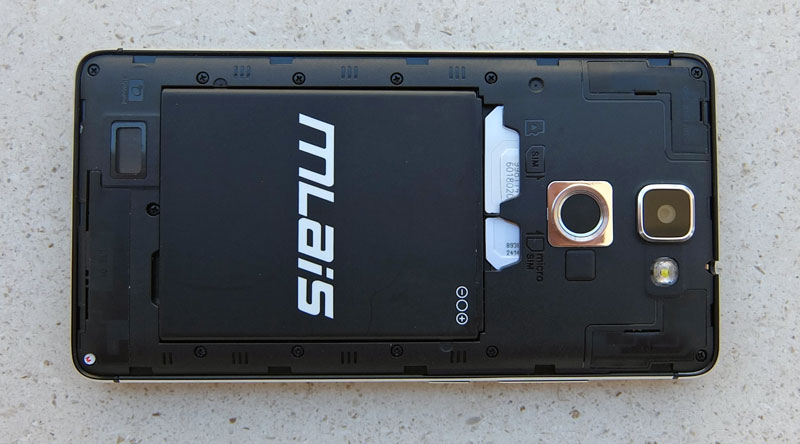
When dealing with an oversized phone with relatively powerful hardware, battery life is obviously going to be a concern. The Mlais M7 ships with a user-replaceable 2600mAh battery. This is not a lot in this day and age, but most users should have no trouble getting more than a day out of it. However, if you use two SIMs and push it really hard, you’ll be out of juice by sundown (sundown in June to be honest). Our biggest complaint is the charge time – after a few days of testing we let the battery dry dead and tried charging it with the included 1A travel charger. It took three hours to charge to 100%.

GPS functionality has been a concern on Asian phones for years, but luckily the situation has improved. The M7 had no trouble obtaining a lock, although an indoor look took quite a bit more time (unsurprisingly). The accuracy was good.
Like previous Mlais phablets, the M7 features two SIM slots, micro and standard SIM. A microSD slot is on board as well, and all three can be used at the same time. However, you will need to remove the battery to access them.
Conclusion
The Mlais M7 is yet another in a flood of Asian phablets based on MediaTek’s 64-bit chipsets, so there is no shortage of alternatives in the same price range. About $200 is the sweet spot for most of these value phablets.
Unless you absolutely need a 1080p panel, NFC, or a best-in-class camera, the Mlais M7 is a very good choice. We especially appreciate the relatively compact design – you’d be hard pressed to find a smaller 5.5-inch phablet on a budget. Most of its direct competitors, along with some much pricier big-brand phablets, are 5-10mm taller. At 8.6mm, the thickness is just average, but the slim steel frame and gently chamfered rear help create the illusion of a thinner device. One potential downside of the compact design is the somewhat limited battery capacity. That said, the looks won’t knock you off your feet, but the conservative design also means fewer people will dislike it.
Mlais decided to make a quasi-flagship on a budget, so there is no 1080p display on board, the camera sensor is not the latest and best model out there, and there is no NFC. However, the Hong Kong-based outfit invested the saving wisely, into a rugged stainless steel frame, Gorilla Glass 3 and a good finish in general. Would it have been better off going for a 1080p display and sacrificing 1GB of RAM and the fingerprint scanner in the process? Possibly, because 2GB is still enough for most users (especially in this price range), and support for fingerprint scanners in Android will remain limited until Android 6.0 rolls out.
At the end of the day Mlais ended up with a competitively priced phone that doesn’t leave much room for complaints. The list price is $189, but you can order it for $173 from Gearbest, using the M7GB coupon.
Mlais M7 Pros and Cons
Pros:
- Compact design, one of the shortest 5.5-inchers around
- Stainless steel frame, Gorilla Glass 3 on top
- Value for money
- Display quality
- Good camera for this price range
Cons:
- Slow charging
- At 2600mAh, the battery fails to impress
- No NFC
- Minor software quirks
- Moody HDR mode
Emoticon Emoticon